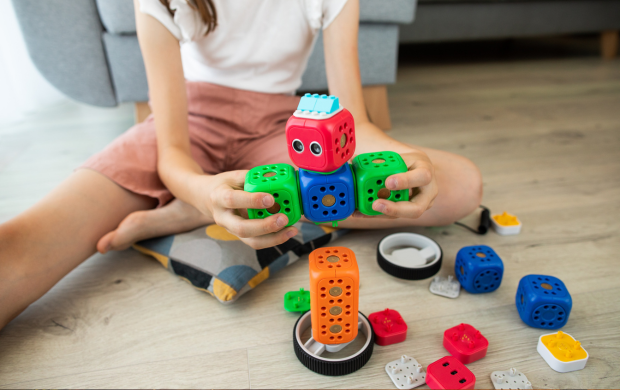Christmas is a holiday of joy, especially for children. As parents, we do our best to enrich this wonderful season that much more by choosing gifts that bring smiles to their faces. Christmas morning will be memorable this year, as Smart Santa has carefully selected a line-up of educational toys. Let’s take a look at some of these amazing toys and see why they make the ideal Christmas present.
The power of educational toys
Play is crucial to children’s learning, and toys for education are an ideal way for kids to experience, experiment, and grow. These toys are made to be interesting and stimulating, capturing children’s interest and getting them to play at the same time. By introducing educational toys into playtime, children can optimize their cognitive, physical, social, and emotional growth. This Christmas, Santa feels that these gifts will not only bring happiness, but they will also help to teach and cultivate children. Let’s find out what toys exist and what advice Santa can give parents:
Educational toy types
Each new toy brings the baby genuine joy and any such toy can be added to the list of Christmas gifts for kids. Educational toys are divided into the following categories:
- Sensory-motor toys include pendant toys and various types of rattles. They aid in the development of tactile sensations, as well as visual and auditory perception;
- Interactive toys. Toys that can speak, sing songs, tell poems, and tell fairy tales are considered interactive. They aid in the development of the child’s hearing and the learning of his first words and phrases;
- Role-playing toys. There are dolls, and figurines of birds, animals, insects, and fish. With these toys, you can put on an entire show. The child adjusts to a new social environment, and communication skills improve;
- Sorters are flat and three-dimensional toys with holes into which parts that fit the shape of the holes are inserted. The toy can be musical, and the sounds heard when the task is completed correctly will set off a chain reaction of emotions and put the child in a good mood. When he compares details, his logical thinking kicks in;
- Puzzles are images made of various materials that must be assembled from small parts. Develop diligence and attentiveness, patience, and accuracy;
- Cubes are made of various sizes and colors of plastic, cardboard, wood, and other materials. They help to foster creativity, imagination, and logical thinking;
- Construction sets are a collection of three-dimensional parts of various shapes with construction drawings and diagrams, as well as any disassembled toy that needs to be assembled. Logic, patience, accuracy, and creative thinking are all called into play;
- Pyramids are the most basic collapsible cone-shaped or spherical toys with a set of parts. Improve your logic and observation skills;
- Dynamic board games are games according to established rules, such as dominoes, chess, checkers, table volleyball, football or hockey. They foster intelligence, ingenuity, and the ability to think logically and learn from mistakes;
- Transformers are toys that can be transformed into another form by using interchangeable design elements. Imagination and preliminary technical skills are developing;
- Sets for active games can include any sports equipment. Jump ropes, balls, hoops, gymnastic sticks, and other items may be included. Movement coordination improves, as does the child’s physical fitness.
Toy selection based on age
Santa knows that rattles, pendants, and black-and-white pictures hung on the sides of the crib play an important role in developing a newborn baby’s abilities. However, when purchasing toys, you must consider the child’s rapid growth and maturation:
- At three months, the baby not only lies in the crib, but also learns to roll over, grab objects with his hands, and try to taste them. When selecting toys, consider age characteristics. A musical carousel, an educational mat, arcs and stretchers with toys hung on them, and sound bracelets are appropriate for children aged 3 months;
- When the child is 9 months to a year old and confidently sits, crawls, and even walks, it is time for more complex educational toys. There are various sorters, construction kits, and large puzzles. It is recommended that your child start finger painting and playing musical instruments at this age. However, the primary focus should be on the development of the musculoskeletal system;
- At around 2-3 years old, the baby begins to understand the purpose of objects around, so the child will most likely enjoy a set of toy furniture or dishes, a suitcase containing medical instruments, and construction sets. Children at this age begin to show an interest in educational board games. A three-year-old’s toy list should also include multifunctional substitute toys such as boxes and jars. He fantasizes while learning to speak with their assistance. After all, the child declares their new purpose while imagining the box as a magical chest and the wand as a sharp sword;
- A 5-year-old child already has a personality, complete with interests and preferences. He has a variety of toys with which he acts out various stories. They are most interested in tabletop gaming aids such as lotto, puzzles, and dominoes.
Conclusion
We hope that this article will assist you in selecting an interesting and educational gift for a child. When shopping, keep in mind that each child is unique, and the best toy is one that matches his interests and hobbies. Toys assist children in developing the abilities and skills required to function in the complex world of adults. A toy is very important in a child’s life, but what is even more important is the attention, care, and love of loved ones. Only by being close to the baby, guiding and teaching, will you be able to raise a fully developed person from a small child.








